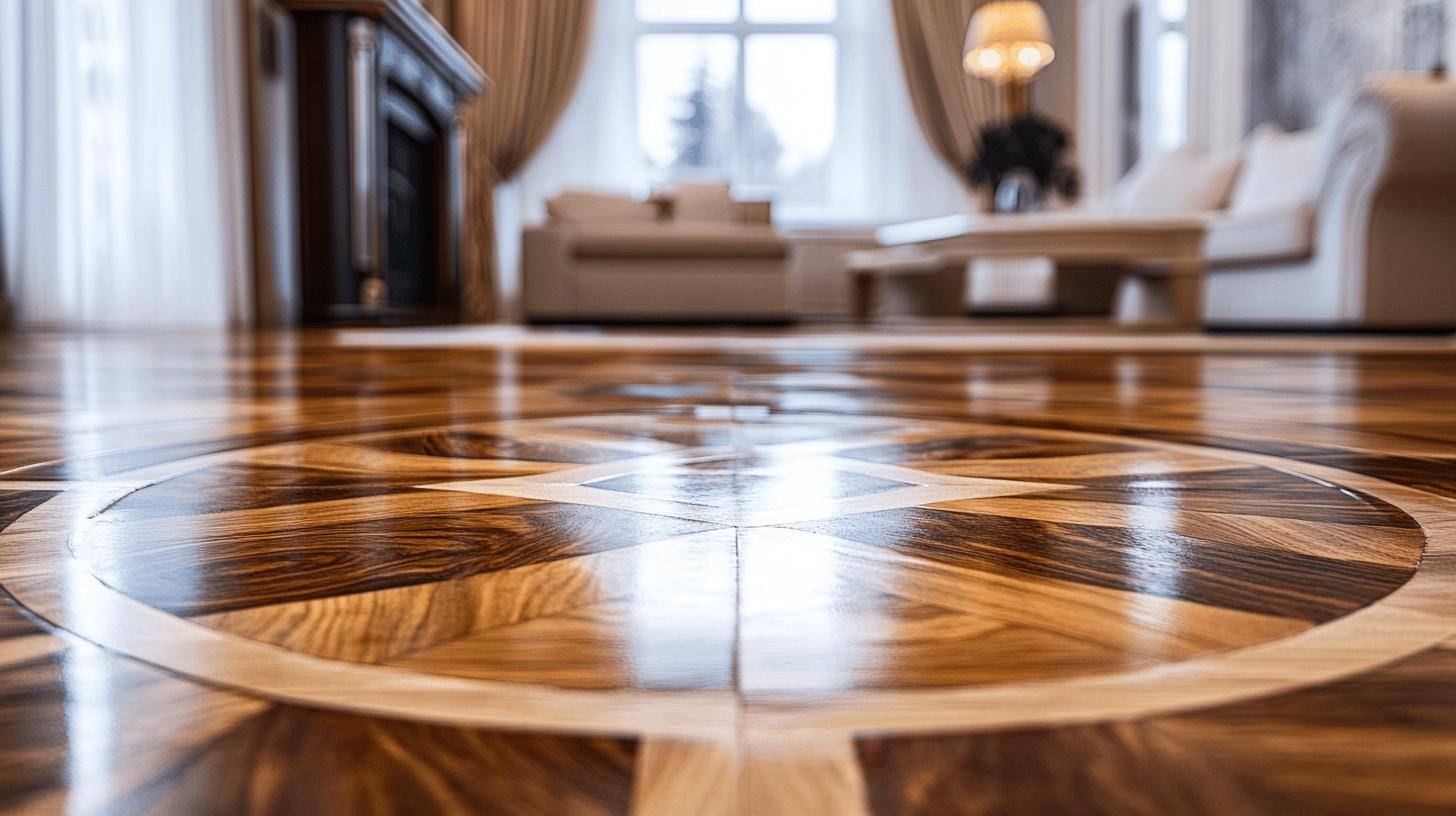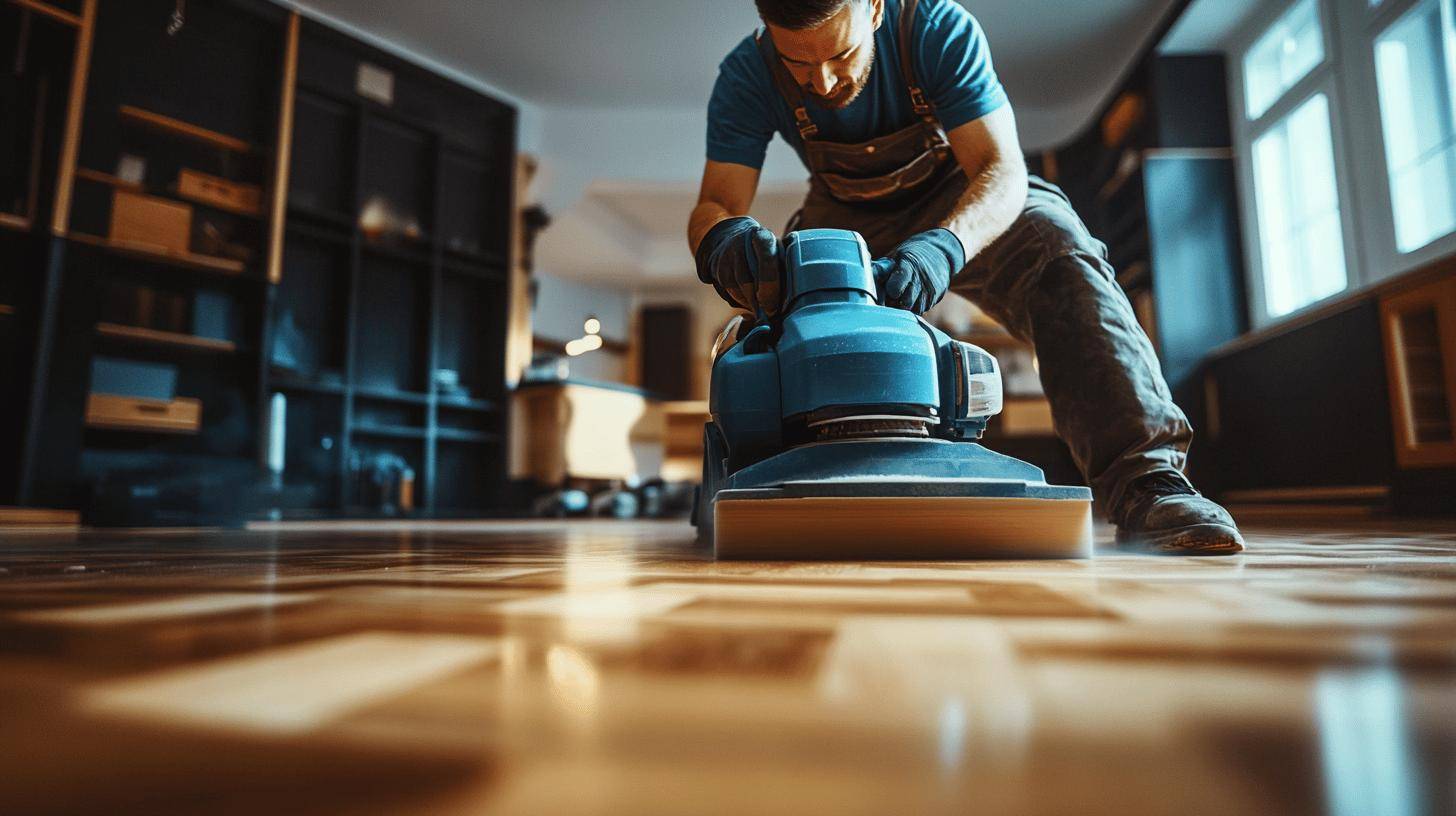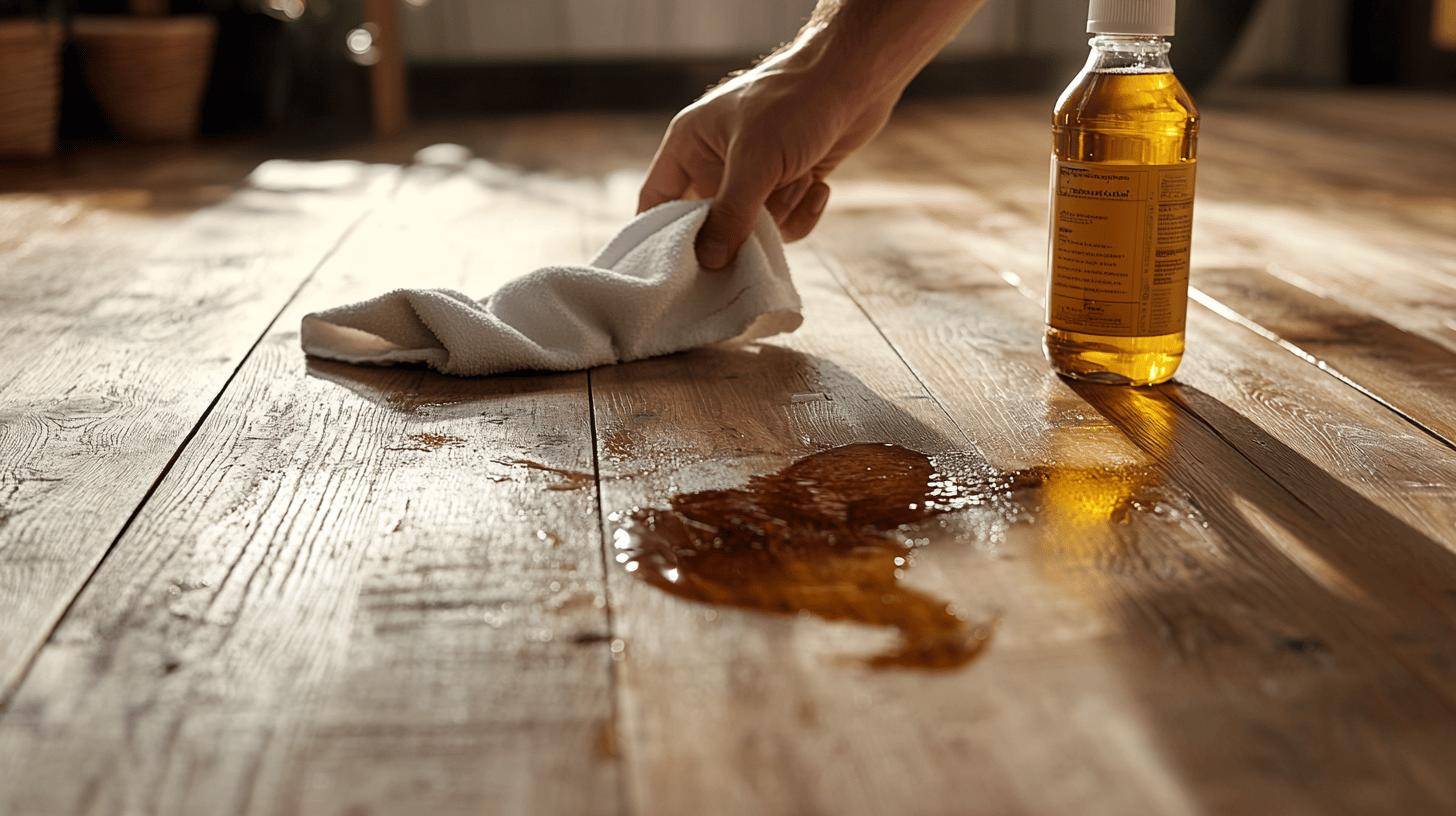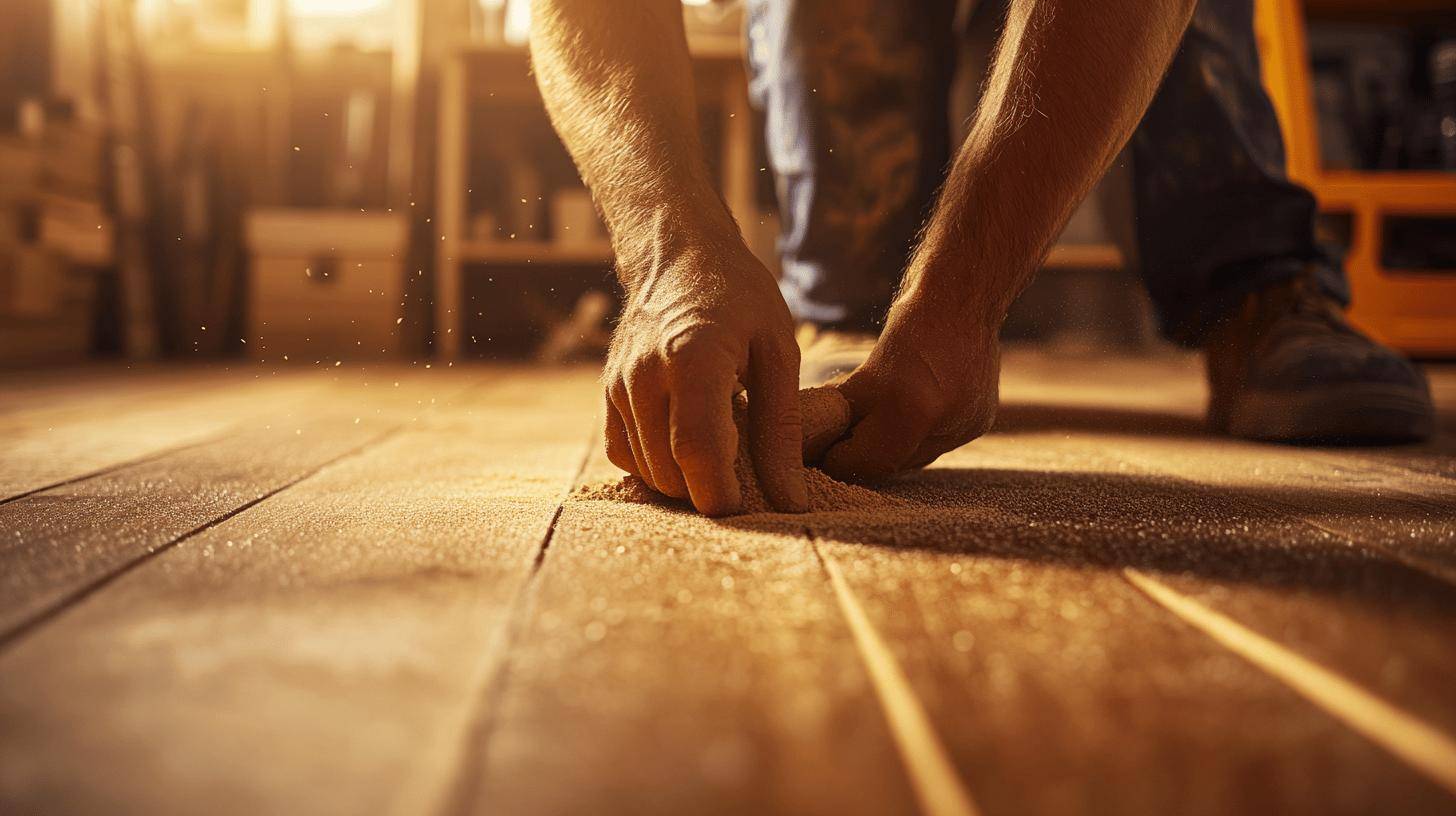Have you ever wondered if restoring your worn-out wood floor might be a better option than replacing it entirely? While many homeowners believe that new is always better, this isn’t necessarily true for wood flooring. Restoring your existing wood floor can save you significant costs, offer environmental benefits, and even preserve the unique character of your home. Before you decide to rip out your old floors, discover why restoration wins in more ways than one. This compelling choice could enhance your space both aesthetically and financially, redefining your approach to home improvement.
Cost Benefits of Restoring Wood Floors
Restoring your existing wood floor is a highly cost-effective flooring solution. The average cost of refinishing ranges from £3 to £5 per square foot, whereas replacing hardwood flooring can cost between £8 and £15 per square foot. This significant disparity in cost highlights the value for money that restoration offers. Choosing to refinish your floors allows homeowners to achieve a fresh, rejuvenated look without the hefty price tag associated with new installations. Additionally, refinishing your floors can extend their lifespan, ensuring you get the most out of your initial investment.
Beyond the direct cost comparison, there are additional savings to consider. Refinishing avoids the expenses tied to demolition and disposal of old flooring materials, which can add up quickly. By eliminating these steps, homeowners not only save money but also reduce the time and inconvenience associated with a full floor replacement. Furthermore, restoring your floors means you won’t have to deal with the hidden costs of new materials, such as underlayment and adhesives. Altogether, refinishing provides a comprehensive, cost-effective solution that maximises both financial savings and convenience.
Environmental Impact of Floor Restoration
Restoring your existing wood floor is a highly sustainable flooring option. Refinishing reduces the need for new raw materials, which in turn conserves natural resources and minimises the ecological footprint. By choosing to restore rather than replace, you are opting for an environment-friendly flooring solution that helps maintain the balance of our natural ecosystems. This approach is particularly beneficial in reducing deforestation and conserving valuable timber resources.
The environmental benefits of floor restoration extend to waste reduction. When you replace a wood floor, the old materials often end up in landfills, contributing to long-term waste management issues. In contrast, restoring the existing floor eliminates the need for disposal of old materials, resulting in less landfill waste. This practice supports eco-friendly habits and promotes a circular economy where materials are reused and recycled rather than discarded.
Moreover, restoring your wood floors significantly reduces the carbon footprint associated with the production and transportation of new flooring. The process of manufacturing new floorboards requires considerable energy and resources, emitting greenhouse gases in the process. By opting for restoration, you avoid these emissions and contribute to a more sustainable and ecological flooring choice. The overall reduction in transportation needs further minimises carbon emissions, making floor restoration a superior choice for eco-conscious homeowners.
- Reduces the need for new raw materials
- Minimises waste and landfill contributions
- Conserves natural resources like timber
- Lowers the carbon footprint from manufacturing and transportation
- Supports a circular economy through material reuse and recycling
Preserving Original Character and Aesthetic Appeal

Restoring your existing wood floor is paramount for preserving its unique charm and character that often cannot be replicated with new installations. Older wood floors frequently boast intricate designs and craftsmanship that add distinctiveness and historical integrity to a home. These details, ranging from elegant grain patterns to handcrafted inlays, embody the essence and history of the property. Replacing such floors with new materials risks losing these irreplaceable elements, erasing a part of the home’s architectural story.
Refinishing enhances the natural beauty of the wood while maintaining its original structure and details. This process revitalises the floor, bringing out its innate aesthetic appeal without the need for new materials. By sanding and applying a fresh finish, the wood’s colour and texture are rejuvenated, offering a fresh, updated look that honours its historical roots. This method ensures that the floor’s classic hardwood charm is not only preserved but also accentuated, breathing new life into the existing flooring.
Highlighting Unique Features
Restoration can reveal and maintain unique features that are specific to the era or style of your home. Intricate inlays, decorative borders, and parquet patterns are often hidden beneath layers of old finish and grime. By carefully refinishing these areas, you can uncover and highlight these beautiful elements, ensuring that the floor’s historical and aesthetic significance is preserved. This process allows homeowners to appreciate the craftsmanship and design intricacies that were originally intended to be showcased.
Furthermore, restoring these unique features can add significant value to your property. Potential buyers and visitors often appreciate the attention to detail and the preservation of original features, which can set your home apart from others. This emphasis on maintaining historical integrity not only enhances the visual appeal but also retains the cultural and architectural heritage of the property. In essence, floor restoration is not just about improving the floor’s appearance but also about honouring and preserving the story embedded in every plank.
Longevity and Durability of Restored Floors
Properly refinished hardwood floors can last for decades, offering an impressive wood floor lifespan extension. When floors are sanded and refinished, the process removes surface imperfections and applies a fresh protective layer, effectively rejuvenating the hardwood floor. This not only enhances the appearance but also fortifies the wood against future wear and tear. Over time, this investment in refinishing can pay off significantly by extending the longevity of your existing floors.
Restoration addresses structural issues such as gaps, buckling, and surface wear, which are common problems in older floors. By filling gaps and sanding down uneven surfaces, refinishing provides a smoother and more stable flooring. This process ensures that the floor remains durable and capable of withstanding heavy use. Moreover, the new finish layer serves as a barrier against moisture and scratches, further enhancing the durability of restored floors.
Maintaining a restored floor is crucial for prolonging its life. Regular cleaning and protective measures, such as using area rugs in high-traffic areas and placing felt pads under furniture legs, can help keep the floor looking its best. Periodic reapplication of protective coatings can also extend the floor’s lifespan, ensuring that it continues to look beautiful and function well for many years. By following these maintenance practices, homeowners can enjoy the benefits of their hardwood floor rejuvenation for decades.
Health and Safety Benefits of Refinishing
How does refinishing improve indoor air quality by removing contaminants? Refinishing removes accumulated dirt, allergens, and contaminants from the floor. Over time, wood floors can trap dust, pet dander, and other allergens in their crevices. By sanding down the surface and applying a fresh finish, these harmful particles are eliminated, creating a cleaner and healthier living space. This process significantly enhances the air quality within the home, reducing the risk of respiratory issues and allergies.
Modern refinishing techniques, such as dustless sanding, offer additional health benefits. What are the benefits of dustless sanding? Dustless sanding reduces airborne particles, which means that the refinishing process generates less dust and allergens. This technique employs advanced equipment to capture dust at the source, preventing it from dispersing into the air. As a result, homeowners can enjoy improved indoor air quality during and after the refinishing process. This method not only minimises respiratory irritants but also makes the overall environment cleaner and safer.
- Eliminates trapped dirt and allergens
- Reduces airborne particles with dustless sanding
- Enhances indoor air quality
- Creates a healthier living environment
Time and Convenience of Wood Floor Restoration

Restoring wood floors generally takes less time than replacing them. The refinishing process can often be completed in a matter of days, whereas full replacement may take weeks. Why does restoration take less time? Because it involves sanding, staining, and sealing the existing wood rather than removing and installing new materials. This quicker process makes it a more convenient option for homeowners who want to minimise the downtime and get back to their daily routines as soon as possible.
Restoration is also less disruptive and creates less mess. What makes it less disruptive? Restoration requires fewer steps and generates less debris compared to a full replacement. By avoiding demolition and the removal of old flooring materials, homeowners face less upheaval in their living spaces. Additionally, the reduced amount of dust and waste helps in maintaining a cleaner environment throughout the process. This means less hassle and a smoother experience for those living in the home.
Minimising Disruption
The convenience of less upheaval and disruption during the restoration process is a significant advantage. Unlike a full replacement, which often involves moving furniture, tearing up old floors, and dealing with extensive dust and debris, restoration is a more streamlined process. Refinishing your wood floors typically allows you to stay in your home, reducing the inconvenience and stress associated with major renovations.
Another benefit of minimising disruption is that it allows for a more flexible schedule. Homeowners can plan the restoration work around their daily activities, ensuring minimal interference with their lives. This flexibility is particularly beneficial for families and individuals with busy schedules, making wood floor restoration a highly attractive option for those seeking a quick and less invasive solution.
Supporting Local Craftsmanship and Economy
Hiring local craftsmen for floor restoration offers significant economic benefits. When you choose to support local artisans, you are directly contributing to the local economy. These skilled professionals often source their materials locally, thereby creating a ripple effect that benefits multiple businesses within the community. This local economic boost helps sustain jobs and fosters a stronger, more resilient local market.
Skilled professionals bring a wealth of expertise and quality to the refinishing process. What sets them apart? Precision and attention to detail. Local craftsmen possess a deep understanding of the specific types of wood and traditional techniques used in your area, which ensures that the restoration process honours the original craftsmanship. Their specialised skills result in a high-quality finish that not only enhances the floor’s appearance but also extends its lifespan.
Choosing local services like Ryan’s Restoration guarantees high standards and personalised service. Ryan’s Restoration is renowned for its commitment to excellence and customer satisfaction. Their professional refinishing services are tailored to meet your specific needs, ensuring that every project receives the meticulous care it deserves. By opting for a trusted local provider, you can be confident in both the aesthetic and structural quality of your restored wood floors, making it a wise investment for your home and community.
Final Words
Choosing to restore rather than replace your wood floors provides significant cost benefits, including savings on demolition and disposal fees. It also supports environmental sustainability by reducing waste and conserving resources.
Restoration preserves the unique charm and aesthetic appeal of your floors, ensuring longevity and durability for decades. Moreover, refinishing enhances indoor air quality and offers a quicker, less disruptive process compared to replacement.
Supporting local craftsmanship by opting for services like Ryan’s Restoration ensures high-quality, personalised results.
Why restoring your existing wood floor is better than replacing it? Because it is a cost-effective, eco-friendly, and aesthetically pleasing solution that supports local economies.
Transform your space with our expert wood floor restoration services! Contact us today to learn more about how we can help you maximise the beauty and lifespan of your floors.
FAQ
Is it better to refinish hardwood floors or replace them?
Refinishing is better for cost savings and preserving original wood character, costing £3-£5 per square foot versus £8-£15 for replacement.
Is it worth restoring the original floorboards?
Restoring original floorboards is worth it, as it preserves unique charm, character, and enhances the wood’s natural appeal.
Does refinishing hardwood floors really make them new again?
Refinishing makes hardwood floors look nearly new by removing surface wear and enhancing the wood’s natural beauty.
Is it worth refinishing old hardwood floors?
Refinishing old hardwood floors is worth it for cost savings, environmental benefits, and extending the floor’s lifespan.






